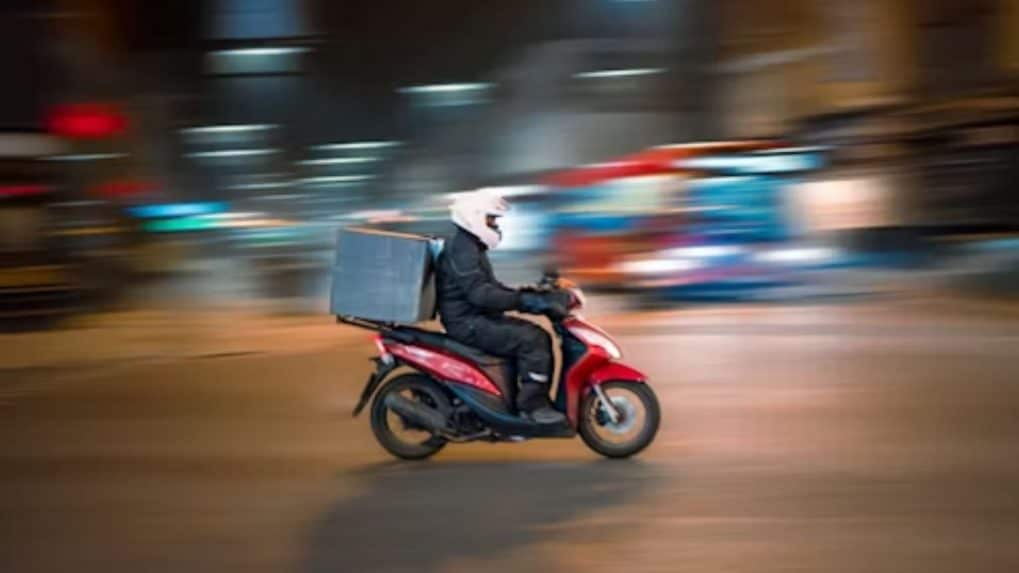India's quick commerce market to clock Rs 2 lakh crore in 3 years: CareEdge report
The seller's commission holds the largest pie in the revenue profile of a quick commerce firm at around 68-74 percent, followed by Delivery charges at 11-13 percent, Ads & Brand boosts by 9-11 percent
ADVERTISEMENT
India's quick commerce industry is set to witness exponential growth as digital adoption spurs and consumer spending power increases. According to a report by CareEdge, a subsidiary of Care Ratings Limited, the quick commerce market is estimated to have a reach of around Rs 64,000 crore in the fiscal year 2025, growing at a staggering compounded annual growth rate (CAGR) of 142% between FY22 and FY25.
Besides, evolving consumer preferences, hyperlocal infrastructure, and a lower base are the key contributors behind the astronomical rise in the quick commerce sector in the country.
Further, the report has projected a strong double-digit growth in the coming years as the businesses expand in Tier-2 and 3 cities.
Amazon launches quick commerce services in Delhi
Additionally, the three dominant quick commerce players, that is Zepto, Blinkit, and Swiggy Instamart, have also been optimising advertising, subscriptions, and tech-led inventory to revive profitability.
In the next three years, the quick commerce market is poised to clock a gross order value of Rs 2 lakh crore by FY28 from Rs 64,000 crore in FY25, at a CAGR of 45-46 percent.
Nykaa’s quick commerce venture expands to 7 cities, promises order delivery in 30-120 min
A slew of Direct-to-Consumer and Fast Moving Consumer Goods brands have embraced quick commerce, expanding their product variety and boosting average order values. Simultaneously, companies are also investing heavily in dark stores, tech infrastructure, and delivery optimisation, laying the groundwork for efficient and scalable operations. Further, the report mentioned that the Q-commerce market revenue generated through fees has grown at a significantly faster pace than the gross order value. This is because of the rise in platform fees by all the major players.
"The fee-based revenue, which stood at Rs 450 crore in FY22, has reached an estimated Rs 10,500 crore in FY25 and is further projected to reach Rs 34,500 crore by FY28, representing a significant CAGR of 26-27% from FY25 to FY28," according to CareEdge report.
Quick commerce disrupts India’s grocery industry, kirana stores hit hard: Kearney
The fee rate across the Q-commerce sector has shown a sharp upward trend between FY22 and FY25, driven by improved monetisation strategies. For instance, leading players reported take rate increases from around 7–9 percent in FY22 to 14–18 percent by FY25.
The seller's commission holds the largest pie in the revenue profile of a quick commerce firm at around 68-74 percent, followed by Delivery charges at 11-13 percent, Ads & Brand boosts by 9-11 percent, and subscription and private labels by 4-5 percent, respectively.
Moreover, dark stores have been the actual operational engines of quick commerce platforms. During FY24-25, the number of dark stores increased from 1,800 to 3,072, registering 70.7% year-on-year growth. Moreover, average per-store revenue increased by 25.1 percent during the same period.
"Q-commerce industry is still just around 1% of India’s massive grocery market, but that’s exactly what makes it exciting. As more consumers embrace the speed and convenience it offers, Q-commerce is set to grow rapidly, even if the broader grocery market growth remains flat," Amir Shaikh, Assistant Director, CareEdge Advisory & Research.

